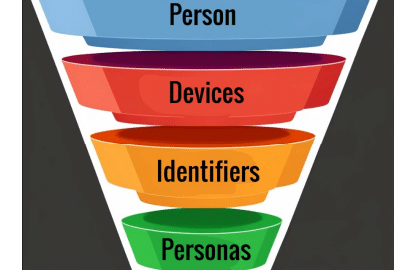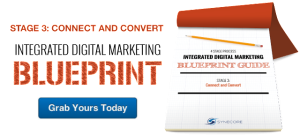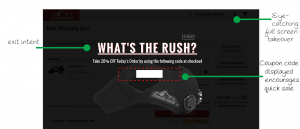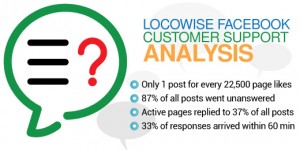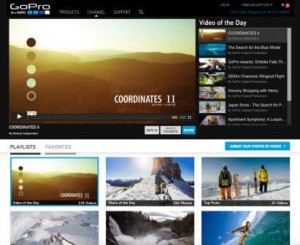Keep use cases — and the customer — top-of-mind using these frameworks.
The digital customer journey is more fragmented than ever. This makes resolving the identities of customers an even greater challenge for marketers. But all hope isn’t lost if marketers focus on use cases and think about the customer first.
“Use cases are more important than identity, and you need to think about things from your customer’s perspective,” said Greg Krehbiel, consultant for The Krehbiel Group, at The MarTech Conference.
“Resolving identity can get in the way of your use cases and it can create a bad customer experience,” Krehbiel said.
Here are two frameworks for approaching identity resolution that keep use cases top-of-mind.
Device framework
“Everybody thinks that people visit their websites, but that’s really not the case,” said Krehbiel. “It’s actually a device that’s making a request to your website.”
Yes, there’s a person who’s using that device. But in order to determine who it is, adopt a framework that starts with the device.
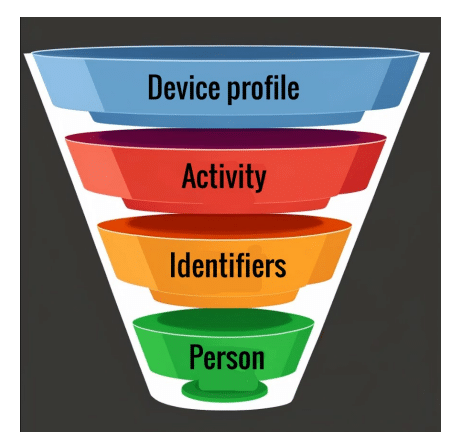
Device profile. The device your customer is using has a device identifier. This can be enough data to inform a basic call-to-action to move the customer journey forward. For instance, if the device is a phone, the next action could be to have the customer download an app.
Activity. Marketers can also move customers along and find out more about them based on the kind of activity they engage in with your website or digital touchpoint. What kind of content are they clicking on? You can, for example, invite all the readers of an article to fill out a survey that relates to the topic.
Identifiers. This is where customers will share a phone number, email or other form of identification with your organization to receive more information, make a purchase or take other actions.
In many cases, these identifiers can be linked with anonymous actions. But this matching isn’t perfect — marketers can be more confident with some matches than others.
For instance, a marketer can include links in an email that the receiver clicks on. In the email service provider (ESP), each email has a record ID. When that customer clicks on the link, your website can capture the record ID from the ESP and add it to the web profile that includes other actions the customer took on your site. In this case, now the anonymous visitor to your website is linked to an email, adding another dimension to the customer.
This matching isn’t perfect because the link from the email might have been forwarded to others or shared in a social media post, which would result in activity from someone other than the recipient of the email.
Person. As more identifiers are linked, marketers can gain confidence in the ways they engage the customer because they’ve resolved the customer to a single person or buyer. They can use deterministic matching, which means they only link profiles when they share a common identifier. Or they can use probabilistic matching, which uses AI to link profiles that show a high probability that they’re the same person (based on behavior and other data), without the “smoking gun” of a common email or phone number that connects the multiple profiles.
“Once you’ve resolved things down to a person, that’s when you can be a little more confident and you can cross-promote newsletters, you can talk about renewals and account information and that sort of thing,” said Krehbiel.
Person framework
Resolving identities from use cases that begin at the device level is an effective strategy for getting to know your customer better. But there’s another way — adopting a person-first framework.
“Looking just at what you can measure, you frequently miss the big picture,” Krehbiel said. “Another way to think about these things is that the device framework is sort of like the measurement left brain side of things, and the person framework is sort of like the right brain creative side of things.”
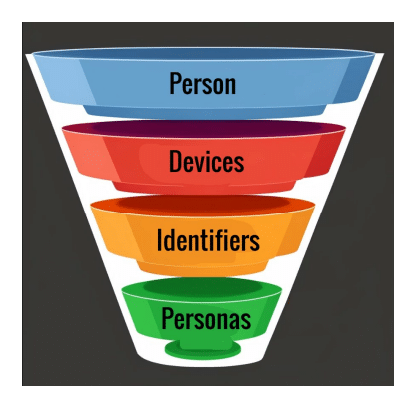
Person-first. Begin with a concept of your customer as a person without the digital baggage. People online often share just a part of who they are based on the platform or channel they’re using. For instance, a person might use a professional social media account or email for business things, and another account for reaching friends and family. Even though platforms like Facebook encourage people to share their entire personality by preventing them from using multiple accounts, many people prefer to compartmentalize.
Device. Think of the person first, then think of all the ways they try to get around paywalls and avoid sharing data when they engage online.
“You have to look at it from a personal profile first to think what they might do and come up with a list of things that the person might be doing,” Krehbiel explained. “And then you go over to the device profile and you think, ‘How can I come up with a plan that will prevent this from happening?’”
Identifiers. Depending on the device, there are forms of digital fingerprinting that can help marketers identify a returning user, even if that user is using Incognito Mode on their browser.
What’s more important than catching cheaters, however, is envisioning how the customer is dividing their online presence.
For instance, in a B2B use case, a customer likely has both a professional email address and a personal one. Keeping this customer preference in mind, it’s best not to merge these accounts. Sending a business email to a personal account detracts from the customer experience instead of improving it.
Personas. Continue to flesh out the activities and needs of the customer according to each distinct device and identifier. If your customer has multiple business emails, one email might be for a salaried position, and the other could be for a different career or “side hustle.”
Keep customers happy by finding the right way to contact them according to their needs.
“As you work through trying to resolve identity, trying to merge records, trying to create that single customer record, think of your use cases through the device framework and through the person framework,” said Krehbiel. “Figure out what’s the best data structure and what’s the best merging strategy and other things that you can do that will be consistent with your business objectives, but also with what your customer wants, to make a good customer experience.”
The post Two frameworks for resolving identity and improving customer experience appeared first on MarTech.
(6)
